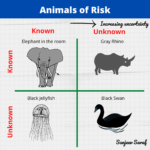The presence of certain functional groups is considered an indicator of reactivity. This is the simplest possible reactivity screening method and serves as a guideline for further analysis. For example, chemicals containing the following functional groups can be considered potentially reactive:
-NO2 : organic nitro compounds
-O-O-, -O-OH : organic/inorganic peroxide and hydroperoxide compounds
-C?C- : Triple bonded carbon atoms as in acetylene and acetylenic compounds
A few of the reactive groups are summarized in table below.
| Groups Containing Carbon | Groups Containing Oxygen | Groups Containing Nitrogen |
|---|---|---|
| Acetylenic compounds | Peroxyacids and salts | Fluorodinitromethyl compounds |
| Metal acetylides | Peroxides | N-metal derivatives |
| Diazirines | Peroxyesters | Azo compounds |
| Diazo compounds | Dithionites | Trizenes |
| Nitroso and Nitro-compounds | Ester monomers | Tetrazole |
| Acyl or alkyl nitriles | Amide monomers | Azides |
| Epoxides | - | Hydroxylamine and salts |
| Metal fulminates or oximates | - | N-haloamides |
| Alkene monomers, -(CH-CH)n- | - | - |
To learn more about evaluating reactive chemical hazards, please join my blog.





